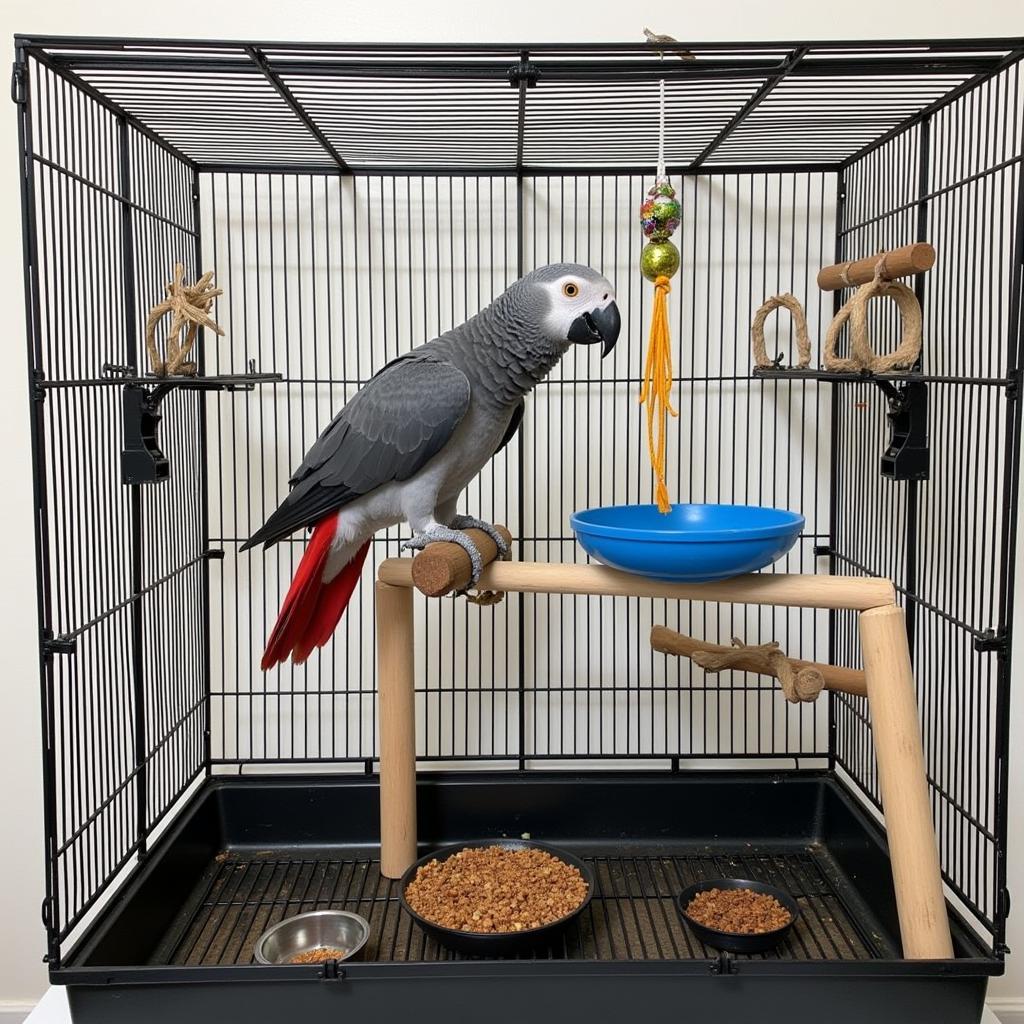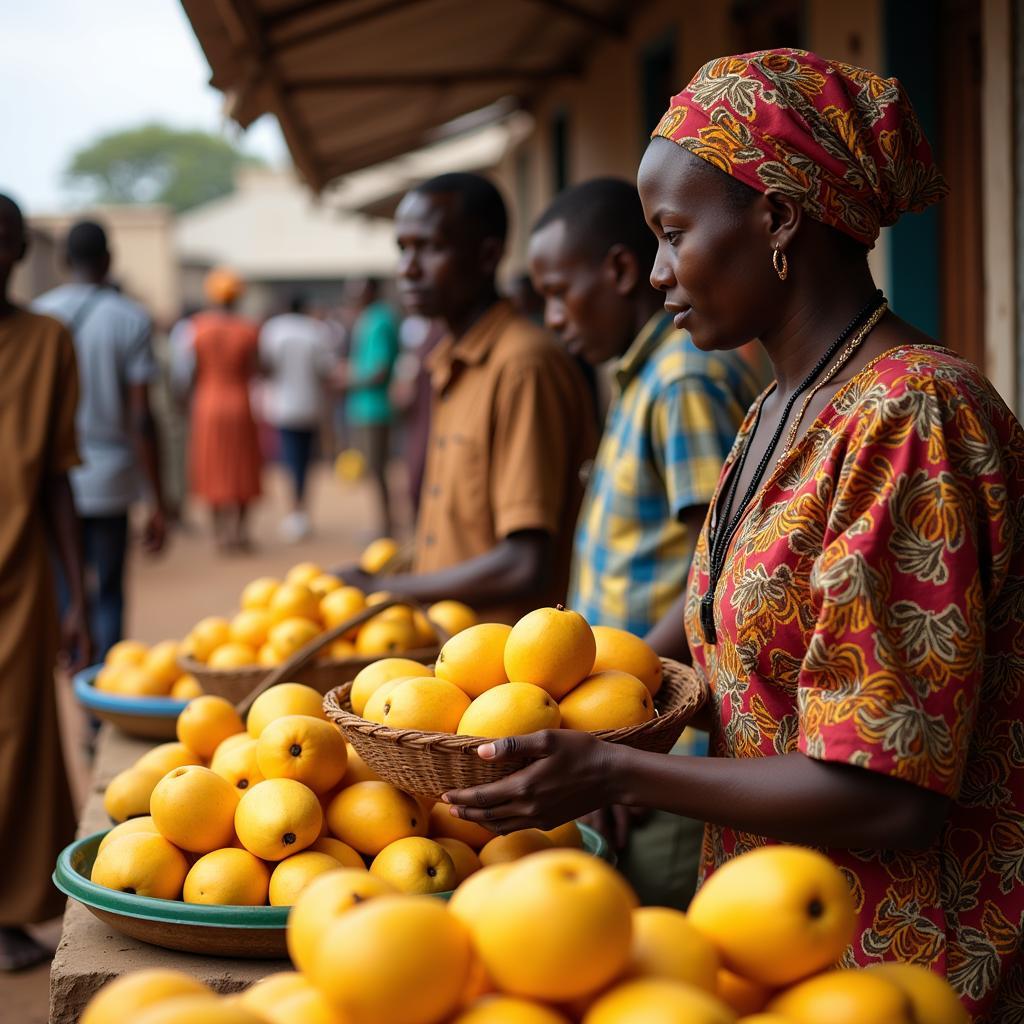The Majestic African Baobab Tree Bonsai
The African Baobab Tree Bonsai captures the ancient spirit of Africa in miniature. These captivating bonsai represent a unique blend of art, nature, and cultural heritage, offering a tangible connection to the African savanna. But how do you cultivate and care for these fascinating miniature giants? This article will delve into the world of African baobab tree bonsai, exploring their origins, care requirements, and the cultural significance they hold.
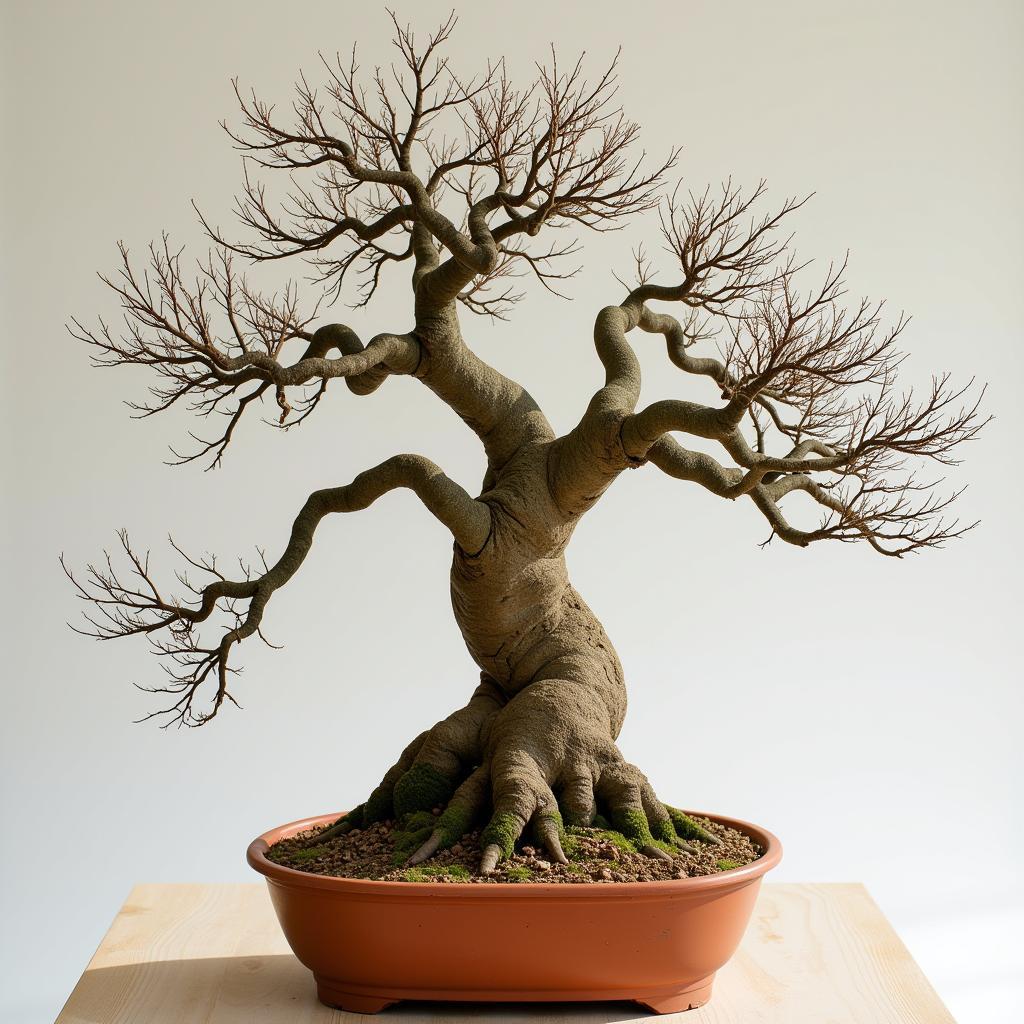 A majestic African baobab bonsai in a terracotta pot, showcasing its thick trunk, sparse branches, and unique silhouette against a neutral background.
A majestic African baobab bonsai in a terracotta pot, showcasing its thick trunk, sparse branches, and unique silhouette against a neutral background.
Unveiling the African Baobab: From Giant to Bonsai
The baobab, often called the “tree of life,” is iconic in Africa, known for its massive size and longevity. Transforming these giants into bonsai african bonsai tree requires patience and skill, mimicking the natural environment to achieve a miniature version of the majestic tree. This art form honors the baobab’s cultural significance, bringing a piece of Africa into homes worldwide. This involves specialized pruning and shaping techniques, along with careful attention to soil, watering, and light conditions.
The Art of Cultivating an African Baobab Bonsai
Creating an african baobab bonsai requires specialized techniques. The process involves careful selection of young baobab plants, pruning to shape the branches and trunk, and repotting to control growth. Maintaining the bonsai’s health involves mimicking the African savanna environment through controlled watering and exposure to sunlight.
Watering Your Baobab Bonsai: Mimicking the African Savanna
Baobab trees are drought-tolerant, storing water in their thick trunks. Watering should be done thoroughly when the soil is dry, allowing it to dry out completely between waterings. Overwatering can lead to root rot, so a well-draining soil mix is crucial.
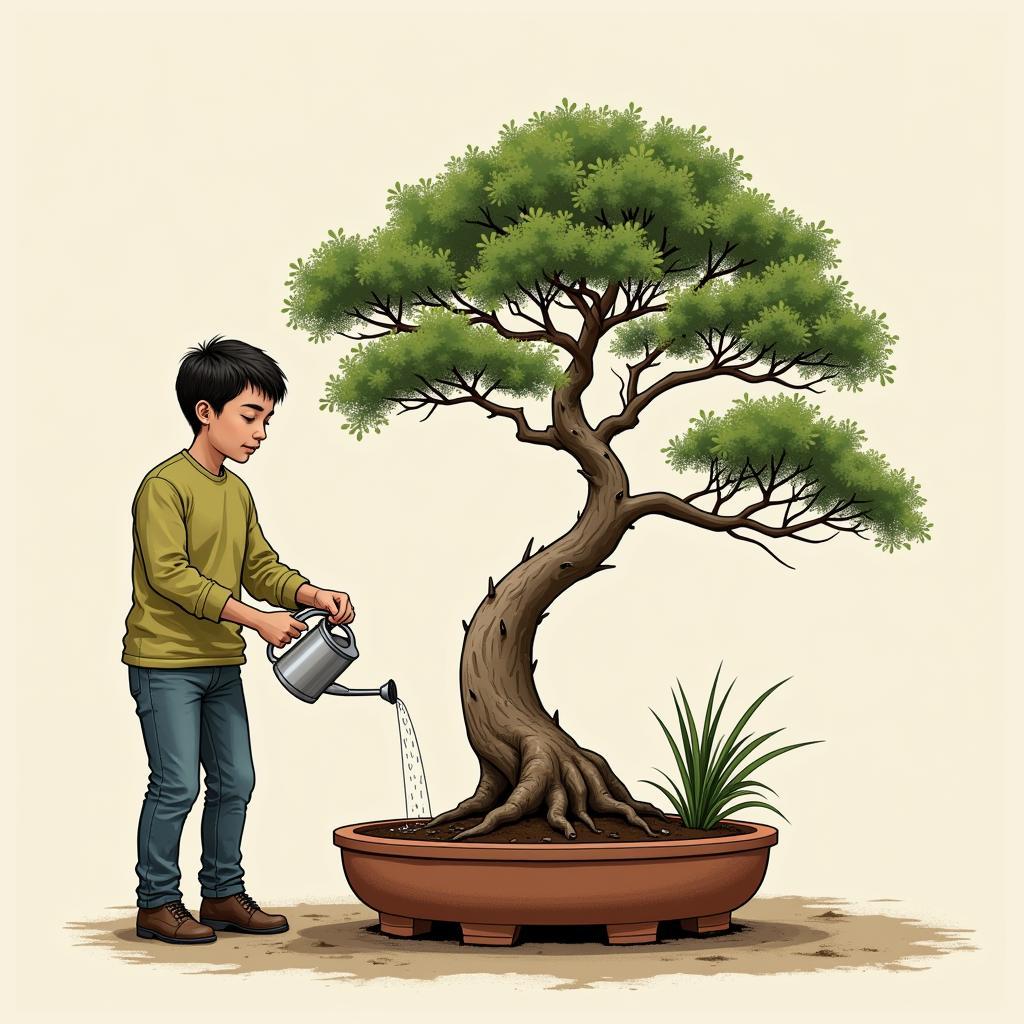 A person carefully watering an African baobab bonsai with a small watering can, focusing on the soil around the base of the tree.
A person carefully watering an African baobab bonsai with a small watering can, focusing on the soil around the base of the tree.
Sunlight and Your African Baobab Bonsai
These miniature trees thrive in bright, direct sunlight, just like their counterparts in the African savanna. Place your bonsai in a location that receives at least six hours of sunlight per day. During winter months, supplemental grow lights can be beneficial. Proper lighting is essential for healthy growth and vibrant foliage.
Essential Soil for African Baobab Bonsai
A well-draining soil mix is essential for the health of your baobab bonsai. A blend of cactus potting mix, perlite, and coarse sand provides excellent drainage and aeration, preventing root rot.
The Cultural Significance of the Baobab Tree
Across Africa, the baobab holds deep cultural significance. It is a symbol of life, resilience, and community. In many cultures, the baobab is considered sacred, with stories and traditions woven around its majestic presence. Having a baobab bonsai in your home can be a beautiful way to connect with this rich cultural heritage.
“The baobab is more than just a tree; it’s a symbol of life itself, a living testament to resilience and endurance,” shares Dr. Anika Nkosi, a renowned botanist specializing in African flora.
Why Choose an African Baobab Bonsai?
- Unique and captivating aesthetic: The baobab’s distinctive appearance makes for a striking bonsai.
- Connection to African heritage: Owning a baobab bonsai is a tangible connection to Africa’s rich culture.
- Relatively low maintenance: Once established, baobab bonsai are surprisingly easy to care for.
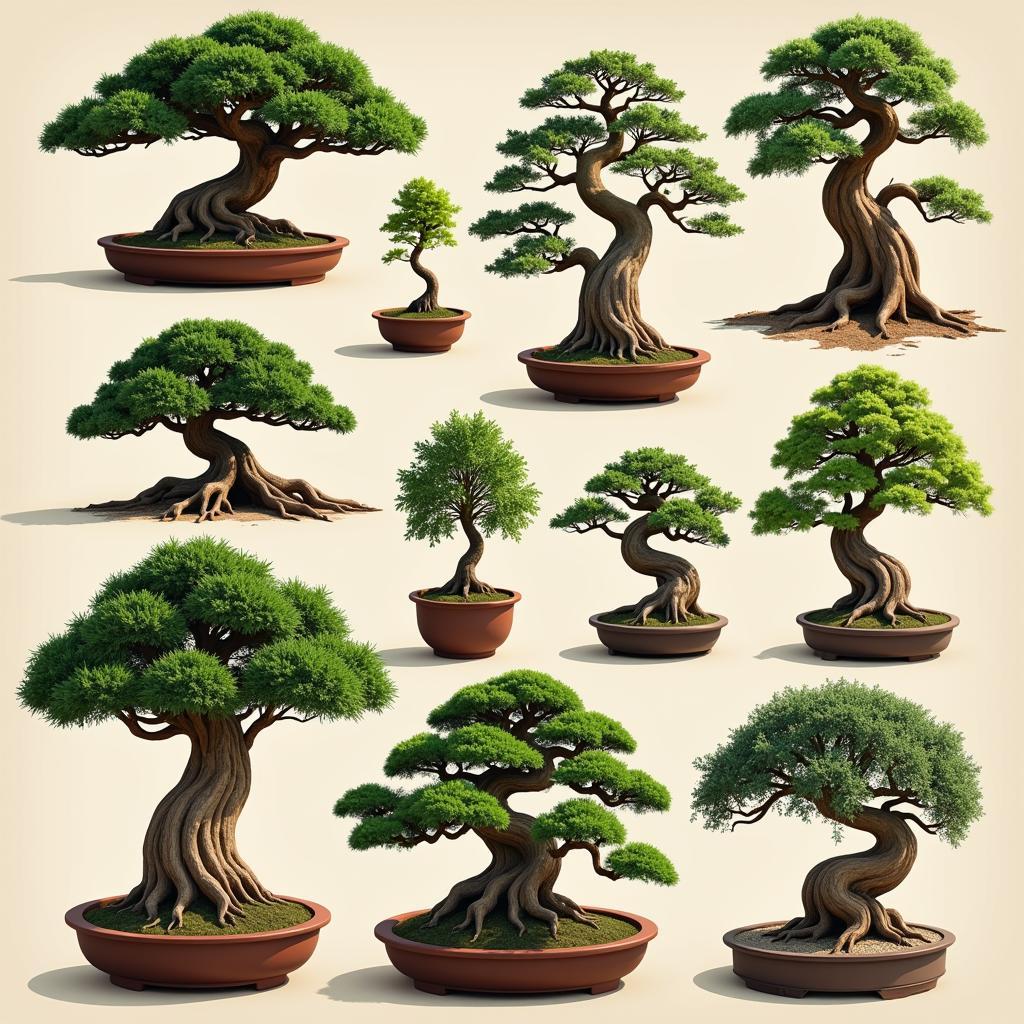 A collection of various African baobab bonsai, showcasing different sizes, shapes, and styles of cultivation.
A collection of various African baobab bonsai, showcasing different sizes, shapes, and styles of cultivation.
Conclusion: Bringing a Piece of Africa Home with an African Baobab Tree Bonsai
The African baobab tree bonsai offers a captivating blend of nature, art, and cultural heritage. By understanding the specific care requirements and appreciating the symbolic meaning of these miniature giants, you can cultivate a thriving piece of Africa in your own home. The unique beauty and resilience of the African baobab bonsai make it a truly rewarding addition to any plant collection.
FAQ
- How often should I water my African baobab bonsai? Water thoroughly when the soil is completely dry.
- What type of soil is best for a baobab bonsai? A well-draining mix of cactus potting mix, perlite, and coarse sand.
- How much sunlight does my baobab bonsai need? At least six hours of direct sunlight per day.
- Where can I purchase an African baobab bonsai? Specialty bonsai nurseries or online retailers.
- What is the cultural significance of the baobab tree? It’s a symbol of life, resilience, and community in many African cultures.
- Can I grow a baobab bonsai from seed? Yes, but it requires patience and specialized techniques.
- How do I prune my baobab bonsai? Prune during the dormant season to shape and control growth.
“Cultivating a baobab bonsai is a rewarding experience. It’s a chance to connect with nature and learn about a fascinating culture,” adds Dr. Adebayo Olufemi, a horticultural expert specializing in bonsai cultivation.
For further support, please contact us at Phone Number: +255768904061, Email: [email protected] or visit our address: Mbarali DC Mawindi, Kangaga, Tanzania. We have a 24/7 customer service team.

